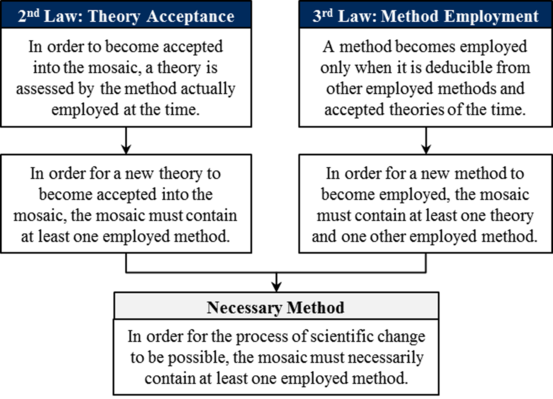Necessary Method theorem (Barseghyan-2015) Reason1
Barseghyan's explanation of the deduction is as follows:1pp. 227-228
By the Non-Empty Mosaic theorem, any mosaic contains at least one element, which is either a theory or a method. But which one is it: is it a theory or is it a method? It is easy to see that if this necessary element of the mosaic were a theory, the process of scientific change would never begin in the first place. Suppose there is a community that accepts only one belief and employs no method whatsoever; this community has no expectations whatsoever. It is obvious that the mosaic of this community will never acquire another element. On the one hand, in order for new theories to become accepted into the mosaic, the mosaic must contain at least one method (by the second law). On the other hand, in order for the mosaic to acquire a new method, there must be not only accepted theories, but also at least one other employed method (by the third law). Indeed, if we recall the historical examples of the third law that we have discussed, we will see that new methods become employed when they are deductive consequences of accepted theories and at least one other employed method. Thus, the necessary (indispensable) element cannot be a theory – it must be a method.
This reason for Necessary Method theorem (Barseghyan-2015) was formulated by Hakob Barseghyan in 2015.1
